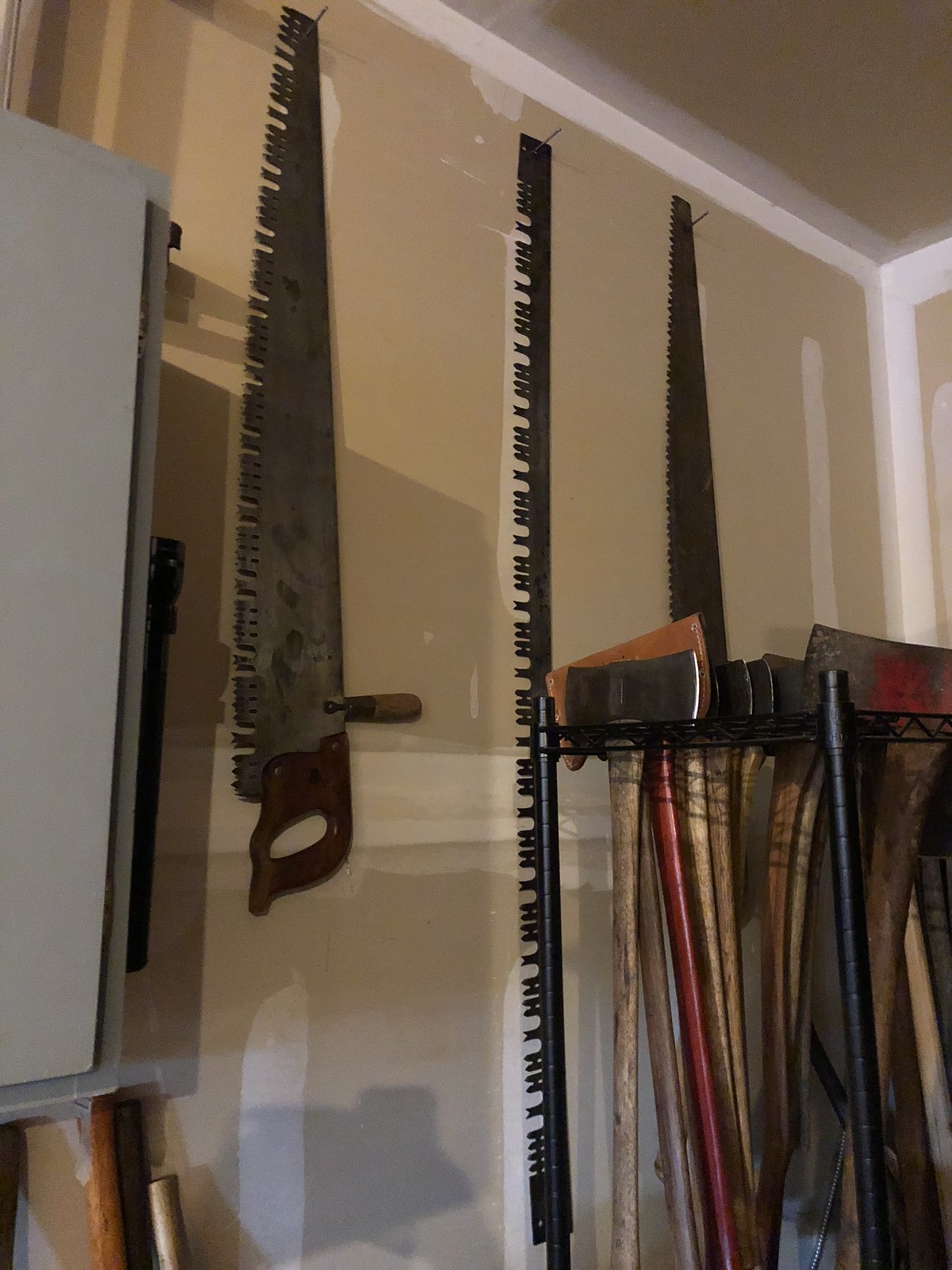Square_peg
Gold Member
- Joined
- Feb 1, 2012
- Messages
- 13,850
Very cool. I'll hope you'll post pics when you have it back together.
The BladeForums.com 2024 Traditional Knife is available! Price is $250 ea (shipped within CONUS).
Order here: https://www.bladeforums.com/help/2024-traditional/



Don't know if this has been addressed before and I'm sure there are other ways to do this. FWIW
Sometimes you run across a saw bolt that no longer wants to hold in the handle and when you try to unscrew the nut the bolt/nut just spins and does not unscrew.
Bob








I get the premise of straightening but lack a "bench anvil". Would a long slab of steel flat stock on my workbench serve the purpose? 2'-3' feet of flat steel at what, 1/8" or would it have to be thicker? Is it necessary to have the rest of the blade absolutely flat and level to the steel while truing a section?(meaning an 1/8" drop or so on either side if the blade was centered on the steel)
For instance, if I need to fix the end of the blade and I have 2-3" of saw not resting on the anvil but dropping the height to the steel to the bench, is that drop going to create more problems than solve when I start making strikes due to torque or anything? I would only work a section that is centered on the "anvil" and not close to the edge of it - if that makes sense.
I have a couple of decent crosscut saws and some recently inherited saw tools. Some of the tools are for much larger blades than man-powered crosscut saws though.
I get the premise of straightening but lack a "bench anvil". Would a long slab of steel flat stock on my workbench serve the purpose? 2'-3' feet of flat steel at what, 1/8" or would it have to be thicker? Is it necessary to have the rest of the blade absolutely flat and level to the steel while truing a section?(meaning an 1/8" drop or so on either side if the blade was centered on the steel)
For instance, if I need to fix the end of the blade and I have 2-3" of saw not resting on the anvil but dropping the height to the steel to the bench, is that drop going to create more problems than solve when I start making strikes due to torque or anything? I would only work a section that is centered on the "anvil" and not close to the edge of it - if that makes sense.
Here is what I am thinking but larger:
Truing.Surface by Agent Hierarchy
It would also be the surface to straighten, set, etc.
Building a frame/vise to hold it is something I think I can manage but am wondering what the Saw Doctors here use as their solid surfaces for straightening the blades and teeth of older saws.

I have used my 165# Trenton and worked longways, with acceptable results. Its about a 20" surface. I put a couple of those adjustable height rolling stands for tablesaws off each end for extra support.
Dolly Chapman showed us using a piece of 1/2" plywood, about 2x2 feet or so, on a concrete slab as a quick and easy method, and it worked great.
After marking the spots with a marker as S Square_peg descibed, work them on the plywood anvil. It doesn't mark up the saw and is very effective.
I've done it several times since she showed me that at the fs trails barn working on saws there and like it a lot.
I'd try that first if you don't have something else that works yet.



Square_peg, I've never tensioned a saw before. I probably wouldn't have so many questions if I had expressed any interest when I lived at home. Our saw-filer passed in the late 80's.
Yes it will, but with everthing else: It's all about the skills of the person doing it! It is cumbersome either way though! Hammering is slighty more skill oriented though and a bit slower. It's mostly down to stretching the metal.
You could even try to heat it in winter and then use CO2 in a can: Steel has memory, and dents/bend would pop out that way. Never do that to the hardened part though!
And last but least: It depends on the thicknes of the saw, but there is a method that can prevent warping al together: Dimpling. It's actually the same as stretching the metal, only more severe by creating surface tension. You see that a lot in motorsports applications, old fighter airplanes, and hotrods. Personally wouldn't want to that to a old saw, but it will work like a charm!
